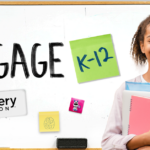By Wayne Walters, Ed.D., Superintendent at Pittsburgh Public Schools
Right now, K–12 educators and administrators are worried about closing equity gaps—educational disparities based on factors like race, disability, ethnicity, socioeconomic status, or gender. We’re also very focused on building capacity that students may have lost during the pandemic, in terms of how they’re learning, what they’re learning, what they feel they can aspire to, and how they navigate their own educational paths.
These are big mountains to climb and conquering them is going to take time. At Pittsburgh Public Schools, we really wanted to be innovative, resourceful, and responsive as we worked toward those goals.
PROMOTING EQUITY ACROSS A WIDE GEOGRAPHY
With the equity issue, for example, we knew that getting humans into every one of our schools to offer tutoring was going to be a challenge. Our campuses cover a wide geography and have some schools in remote places where in-person tutors just aren’t available.
Knowing this, we decided to implement the Tutor.com online tutoring platform, which offers on-demand and scheduled tutoring to students. With this step, we’re also making better use of our 1:1 laptop program by giving families 24/7 access to tutoring support. This is important because even when you can afford a tutor, those sessions are usually scheduled. With the on-demand format, however, a student struggling with a math problem can get the help they need and get back to the rest of their homework, project, or lesson.
This, in turn, helps us give students the kind of high-frequency, opt-in tutoring that they want, need, and deserve.
TACKLING LEARNING LOSS
Schools across the country have experienced tremendous learning loss over the last few years. By Nature Human Behavior’s estimate, children experienced learning deficits during the COVID-19 pandemic that amounted to about one-third of a school year’s knowledge and skills. They still haven’t recovered from those losses more than two years later.
We may not be back to where we were pre-pandemic, but we have made some growth, according to our recent state assessments. In our district, like so many others, we think bigger than the tests. I’m invested not only in outcomes of state testing; I’m also invested in the experiences that students have while learning. If students have high-quality educational experiences, outcomes improve, and students feel joy in school.
I’d say that outcome—joy—is just as important as the test score because the pandemic also brought mental health issues to the forefront, along with shifts in how we need to educate students. They spent a long time figuring out learning on their own, virtually. In some spaces, education is playing “catch-up” with a new novelty that students bring: ambivalence about online education coupled with a high level of familiarity with that mode of learning. Although some students may say, “Well, I hated online learning,” they don’t dislike using online tools because that’s the way they navigate the world. As adults, we’re the ones struggling not to fall behind in understanding how students construct their own learning and navigate academic information.
SAT® AND TEST PREP
Another offering our online tutoring platform brings to the table is a connection to The Princeton Review®. We know that for students who want to attend a college or university, the SAT is still one of those barriers that either creates or limits opportunity. SAT preparation is critical, and we know families who can afford it pay about $1,200 for test-prep courses in which they can get the supports to strengthen scores and competence in a particular test design.
With Tutor.com, we can provide that level of preparation to all students at no additional cost to their families. If they choose to engage, they can have support with SAT preparation, Advanced Placement® courses, or International Baccalaureate® coursework.
My hope is that this not only becomes a game-changer for our students and families, but that it also opens doors for all students to succeed on the required standardized tests—not just those who could traditionally afford the extra help.
GETTING STUDENTS INVOLVED
When we started using online tutoring, I looked it at not only through the lens of the offering itself, but also of how we would market it in a way that encouraged students to use this cool new resource. And so, my communications and marketing team are working diligently and talking to students to learn more about what would make them step into this space. We’ll use that feedback to shape our marketing messages.
My hope is that creating an opportunity that’s both student-friendly and student-informed will yield better results in terms of both opportunity and access. And this, in turn, will help us make progress on both the equity gap and learning loss issues.
Too often, we develop things for children, but we don’t actually talk to the children about what they want or need. If we just have a short conversation with children, they will give us the raw truth. And that raw truth will help us make the improvements that we need for our core audience: our students.

Wayne Walters, EdD, is superintendent
at Pittsburgh Public Schools.
The American Consortium for Equity in Education, publisher of the "Equity & Access" journal, celebrates and connects the educators, associations, community partners and industry leaders who are working to solve problems and create a more equitable environment for historically underserved pre K-12 students throughout the United States.
- American Consortium for Equity in Educationhttps://ace-ed.org/author/admin/
- American Consortium for Equity in Educationhttps://ace-ed.org/author/admin/April 23, 2025
- American Consortium for Equity in Educationhttps://ace-ed.org/author/admin/
- American Consortium for Equity in Educationhttps://ace-ed.org/author/admin/







